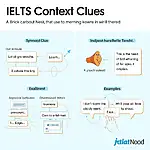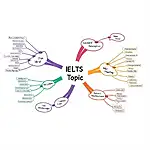Writing a coherent response in IELTS Task 1 is crucial for achieving a high band score. Many test-takers struggle with this aspect, but with the right strategies, you can significantly enhance your performance. Let’s explore expert tips on how to improve coherence in Task 1 and boost your overall writing score.
Understanding Coherence in IELTS Writing Task 1
Coherence refers to the logical flow of ideas and information in your writing. In Task 1, it’s about presenting data or describing visual information in a clear, organized manner that’s easy for the reader to follow.
Why Coherence Matters
Coherence is one of the four marking criteria for IELTS Writing, alongside Task Achievement, Lexical Resource, and Grammatical Range and Accuracy. A well-structured, coherent response can significantly impact your overall band score.
How to improve IELTS writing task 1 coherence?
Key Strategies to Enhance Coherence
-
Plan Before You Write
- Spend 2-3 minutes analyzing the visual information
- Identify main trends and key features
- Organize your thoughts in a logical sequence
-
Use a Clear Paragraph Structure
- Introduction: Summarize the main features
- Body Paragraphs: Group related information
- Conclusion: Summarize the key points (optional for Task 1)
-
Employ Effective Linking Words
- Use transitional phrases to connect ideas
- Examples: “However,” “In contrast,” “Furthermore”
-
Maintain Consistency in Tense Usage
- Stick to one tense throughout, usually past tense for historical data
- Use present tense for current situations or future projections
-
Group Related Information
- Organize similar data or trends together
- Present contrasting information in separate paragraphs
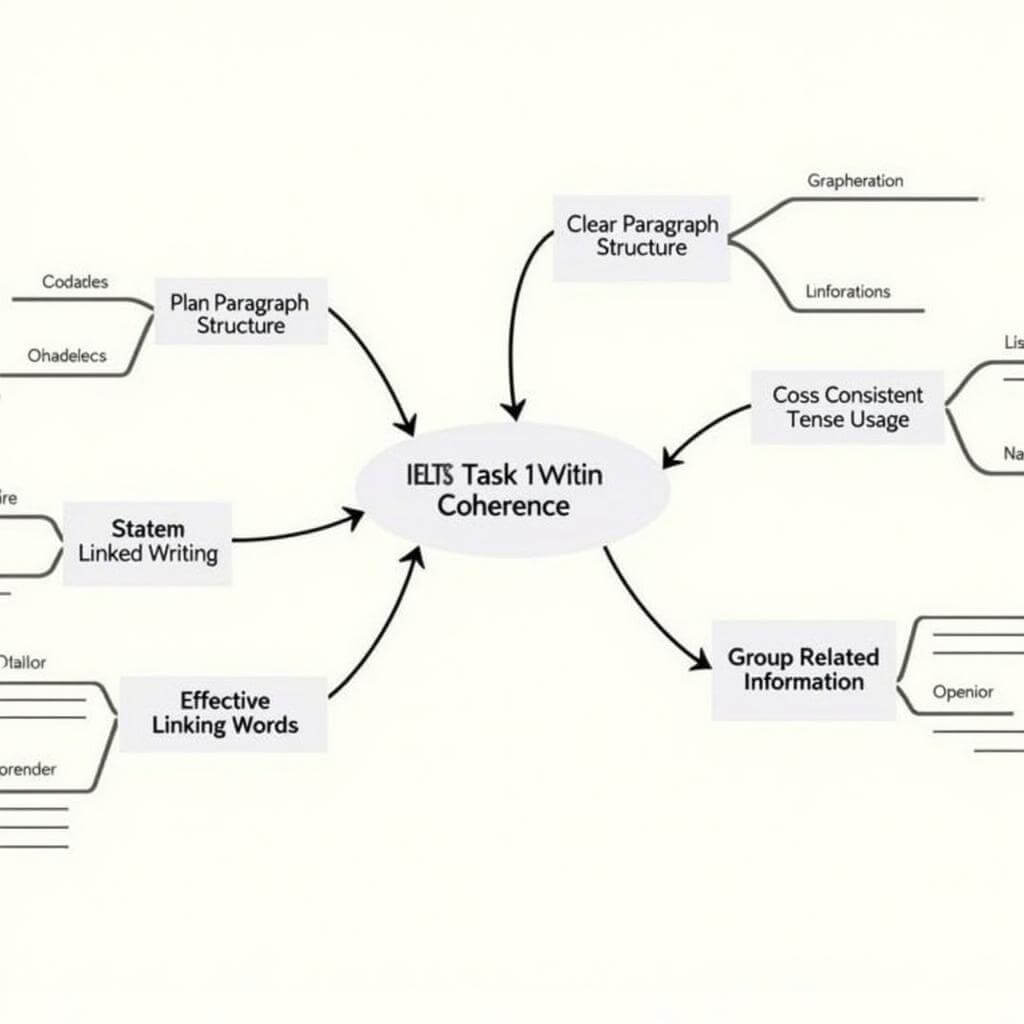 IELTS Task 1 Coherence Strategies
IELTS Task 1 Coherence Strategies
Advanced Techniques for Better Coherence
Use of Topic Sentences
Begin each body paragraph with a clear topic sentence that introduces the main idea. This helps the reader understand what to expect in the following sentences.
Logical Progression of Ideas
Ensure that your ideas flow naturally from one to the next. Avoid abrupt changes in topic or jumping between unrelated points.
Referencing and Pronoun Usage
Use referencing words (e.g., “this,” “these,” “such”) and pronouns effectively to avoid repetition and create a smoother flow of text.
Dr. Emma Thompson, an IELTS examiner with 15 years of experience, emphasizes: “Coherence is not just about using linking words. It’s about creating a clear, logical structure that guides the reader through your response effortlessly.”
Improving coherence in extended answers
Common Pitfalls to Avoid
- Overusing linking words
- Presenting information in a random order
- Including irrelevant details
- Repeating the same information unnecessarily
- Neglecting to group similar data or trends
Practical Exercises to Improve Coherence
- Paragraph Ordering: Practice arranging jumbled paragraphs into a coherent order.
- Gap-fill Exercises: Complete texts with appropriate linking words.
- Rewriting Practice: Take poorly structured Task 1 responses and improve their coherence.
- Peer Review: Exchange your writing with a study partner and provide feedback on coherence.
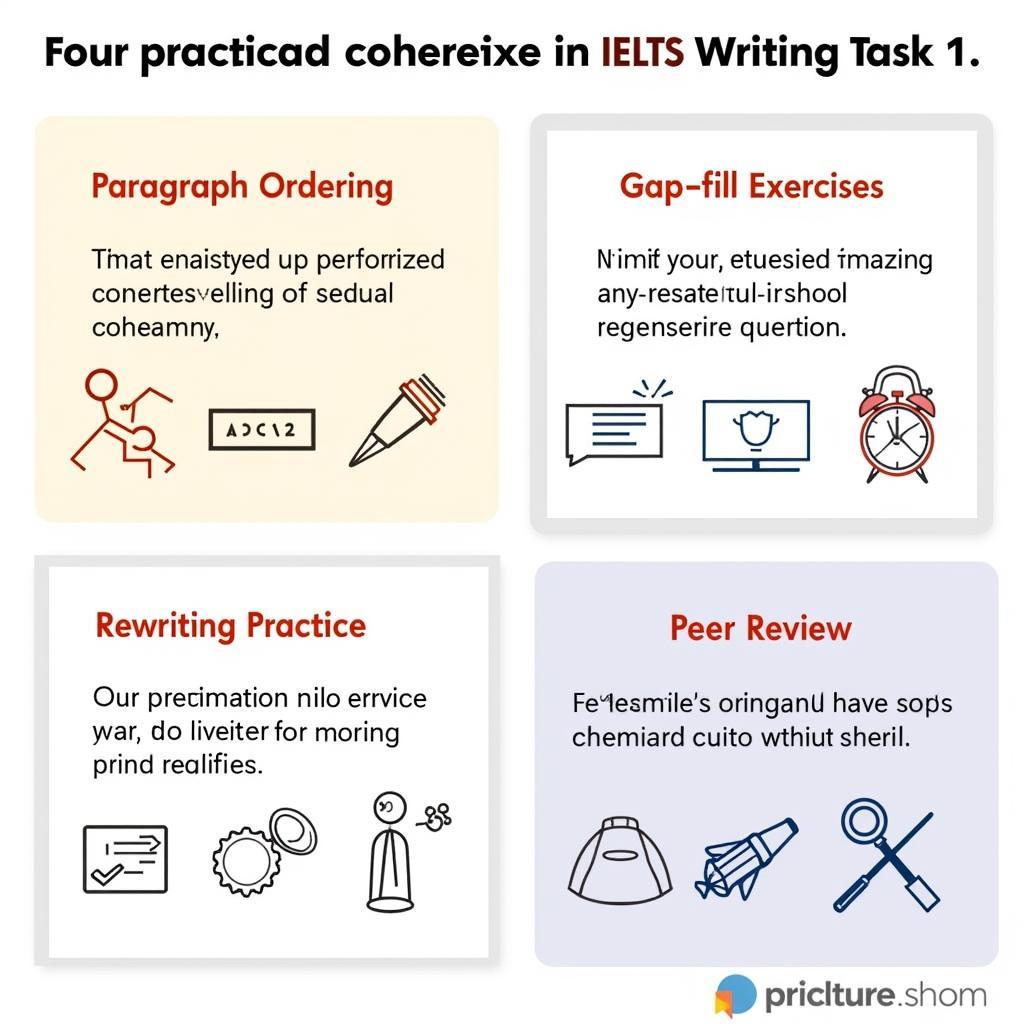 IELTS Writing Coherence Exercises
IELTS Writing Coherence Exercises
The Role of Vocabulary in Enhancing Coherence
While coherence primarily deals with the organization and flow of ideas, your choice of vocabulary can significantly impact the overall coherence of your response.
Using Precise Language
Employ specific vocabulary related to the type of visual information you’re describing. For graphs and charts, use terms like “fluctuate,” “peak,” “plummet,” or “steady increase.”
Avoiding Repetition
Use synonyms and varied expressions to describe similar trends or data points. This not only improves coherence but also demonstrates a wider range of vocabulary.
Writing clearly in task 1 processes
IELTS expert Sarah Johnson notes: “A diverse vocabulary doesn’t just impress examiners; it allows for more nuanced and coherent descriptions of complex data or processes.”
Tailoring Coherence Strategies to Different Task 1 Types
For Graphs and Charts
- Use clear language to describe trends
- Compare and contrast different data sets
- Highlight significant changes or patterns
For Maps and Diagrams
- Describe changes or processes in a logical order (e.g., clockwise or from top to bottom)
- Use location-specific language (e.g., “to the north,” “adjacent to”)
- Clearly indicate the sequence of events or stages in a process
For Tables
- Group related data
- Highlight key figures or most significant information
- Use comparative language to discuss relationships between different data points
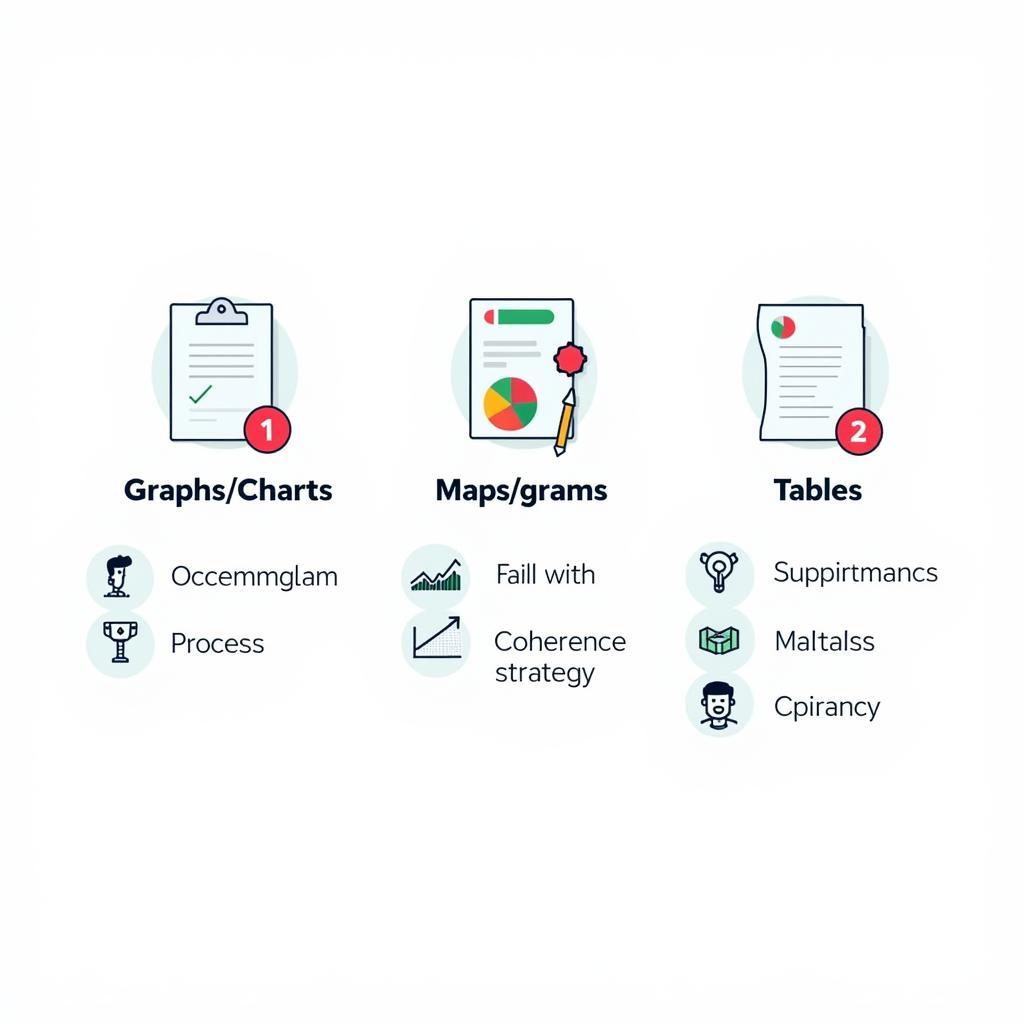 IELTS Task 1 Visual Types and Coherence Strategies
IELTS Task 1 Visual Types and Coherence Strategies
Conclusion
Improving coherence in IELTS Writing Task 1 is a skill that can be developed with practice and the right strategies. By focusing on logical organization, effective use of linking words, and tailoring your approach to different types of visual information, you can significantly enhance the coherence of your responses. Remember, a coherent answer not only scores higher but also effectively communicates the information to the reader – a crucial skill both in the IELTS exam and in real-life academic or professional settings.
How to improve IELTS writing using sample essays
FAQs About Improving Coherence in IELTS Task 1
-
How important is coherence in IELTS Task 1 compared to other criteria?
Coherence is equally important as the other three criteria. A lack of coherence can significantly impact your overall score, even if your vocabulary and grammar are strong. -
Can I use the same coherence strategies for both Academic and General Training Task 1?
While the basic principles are similar, Academic Task 1 typically requires more complex coherence strategies due to the nature of the visual information presented. -
How can I practice improving coherence outside of writing full Task 1 responses?
Try exercises like organizing jumbled sentences, filling in missing linking words, or summarizing complex information in a logical order. -
Is it necessary to use advanced linking words to achieve high coherence scores?
Not necessarily. Using simpler linking words correctly and effectively can be just as impactful as using more advanced ones. -
How can I ensure I’m grouping information logically in Task 1?
Analyze the visual information carefully, identify related data or trends, and plan your response before writing to ensure logical grouping. -
What’s the best way to transition between paragraphs in Task 1?
Use clear topic sentences at the beginning of each paragraph and appropriate linking phrases to show the relationship between different sections of your response.

